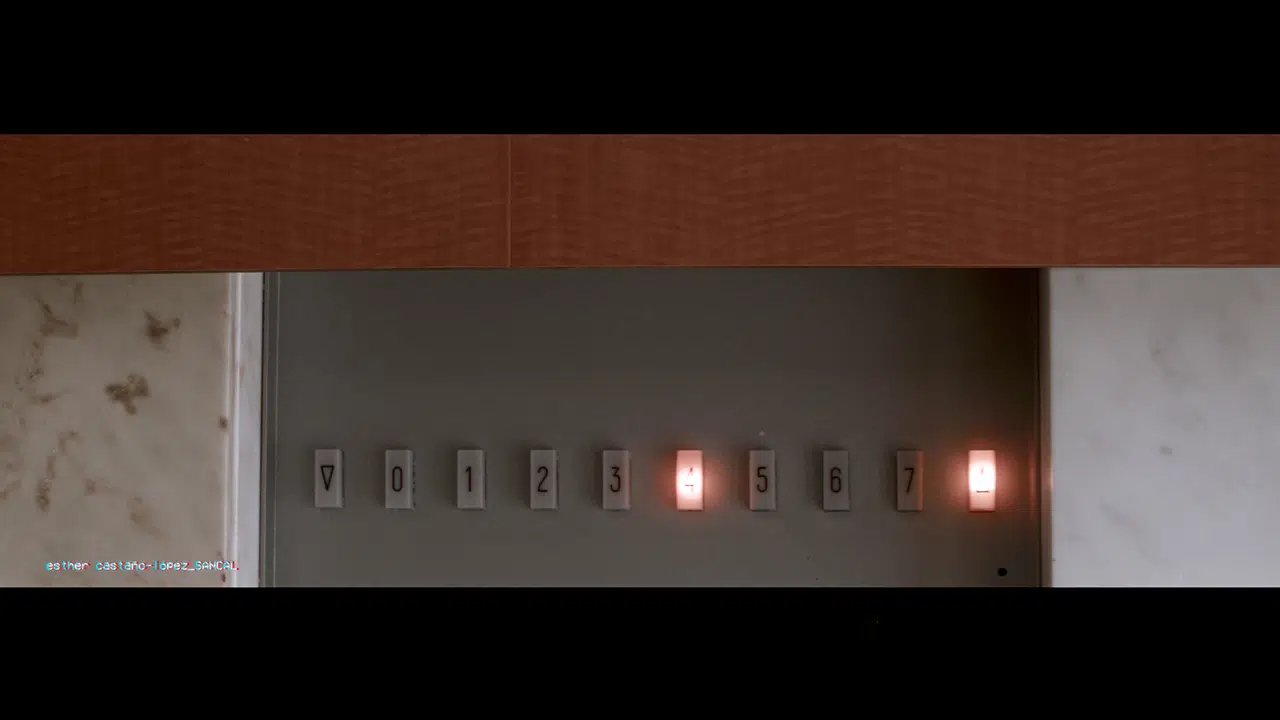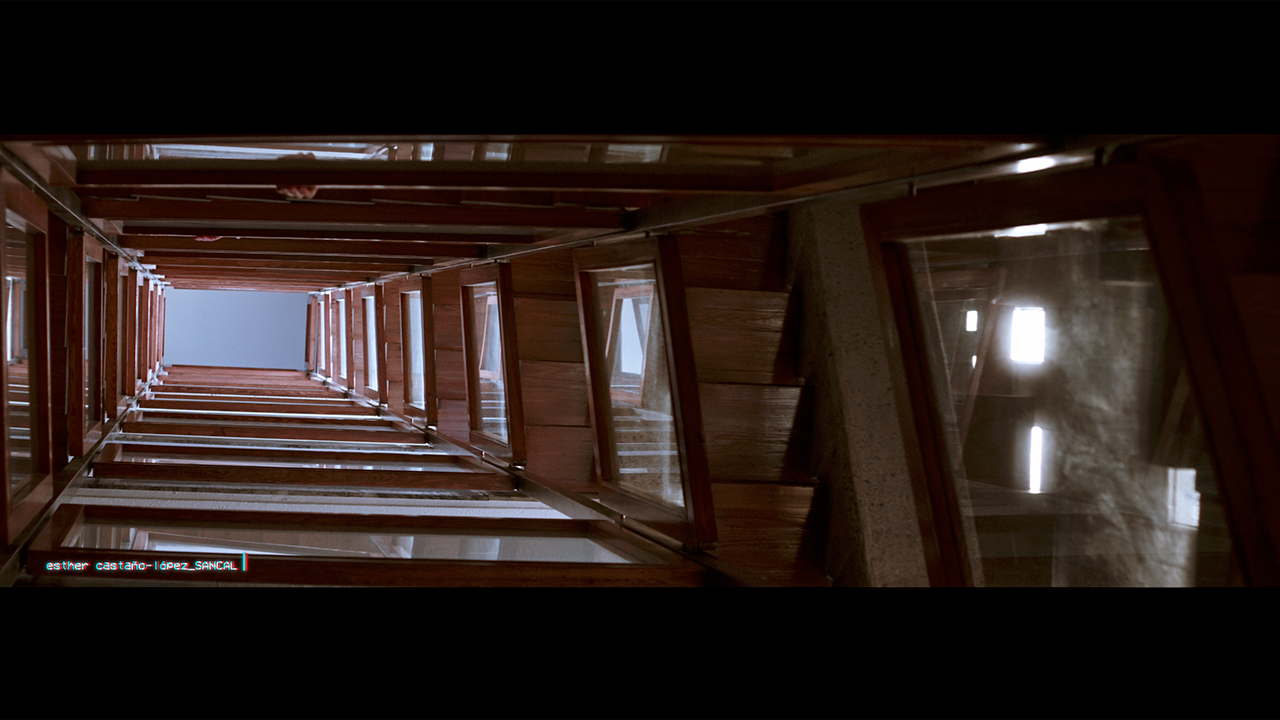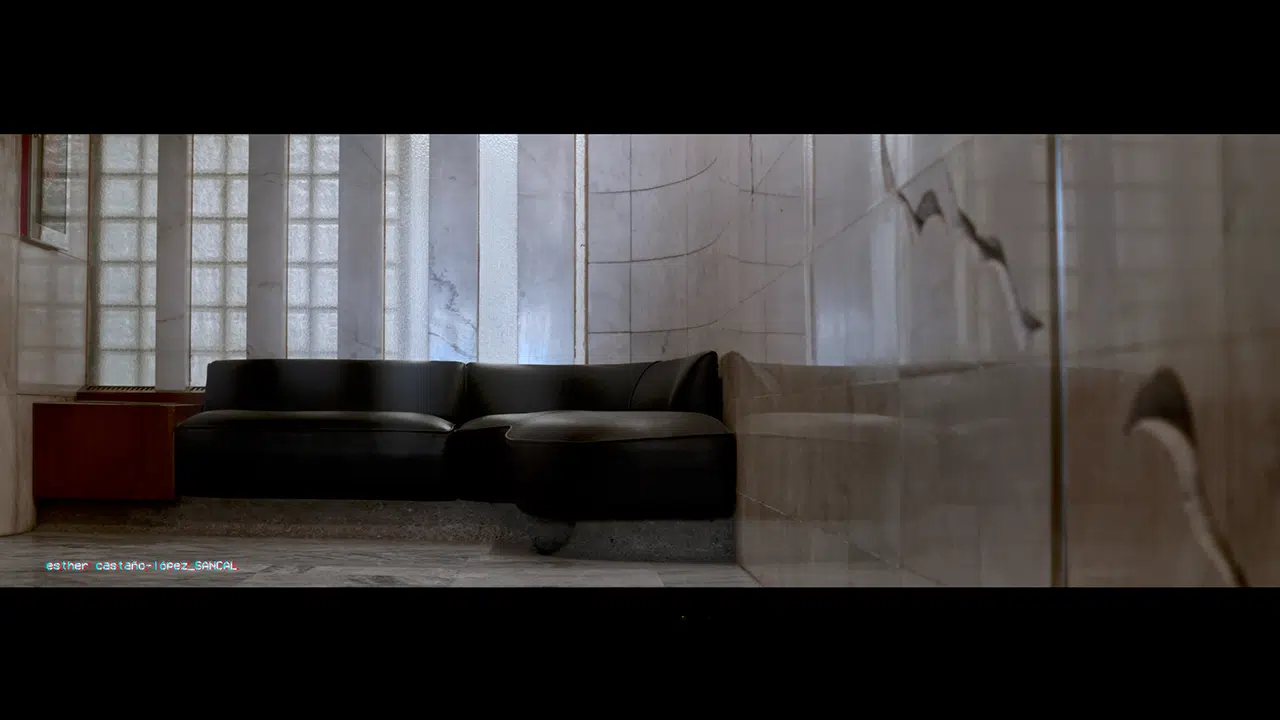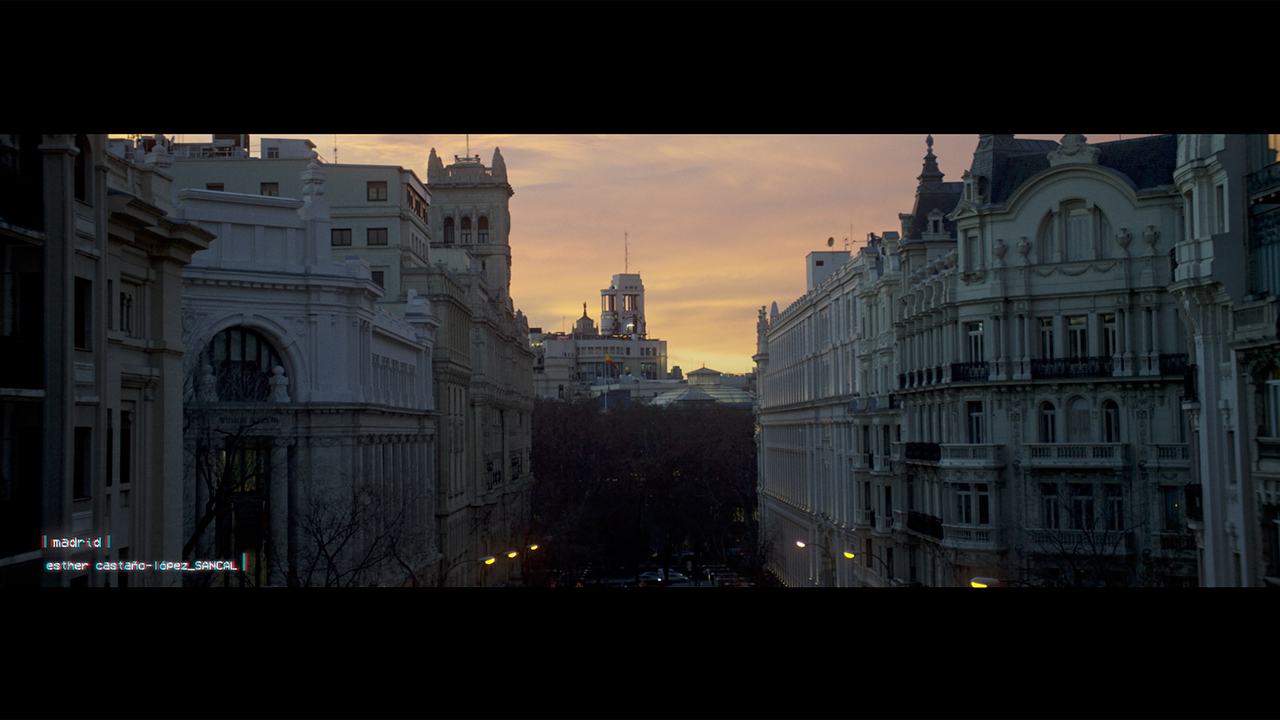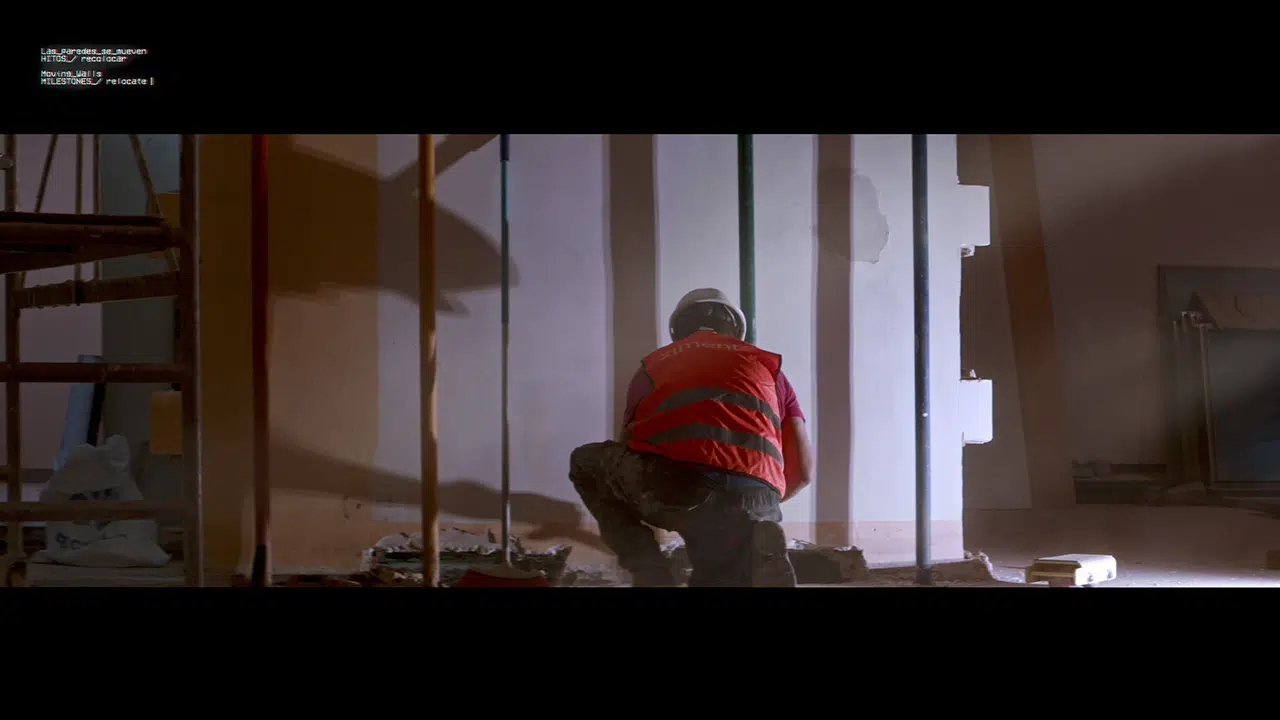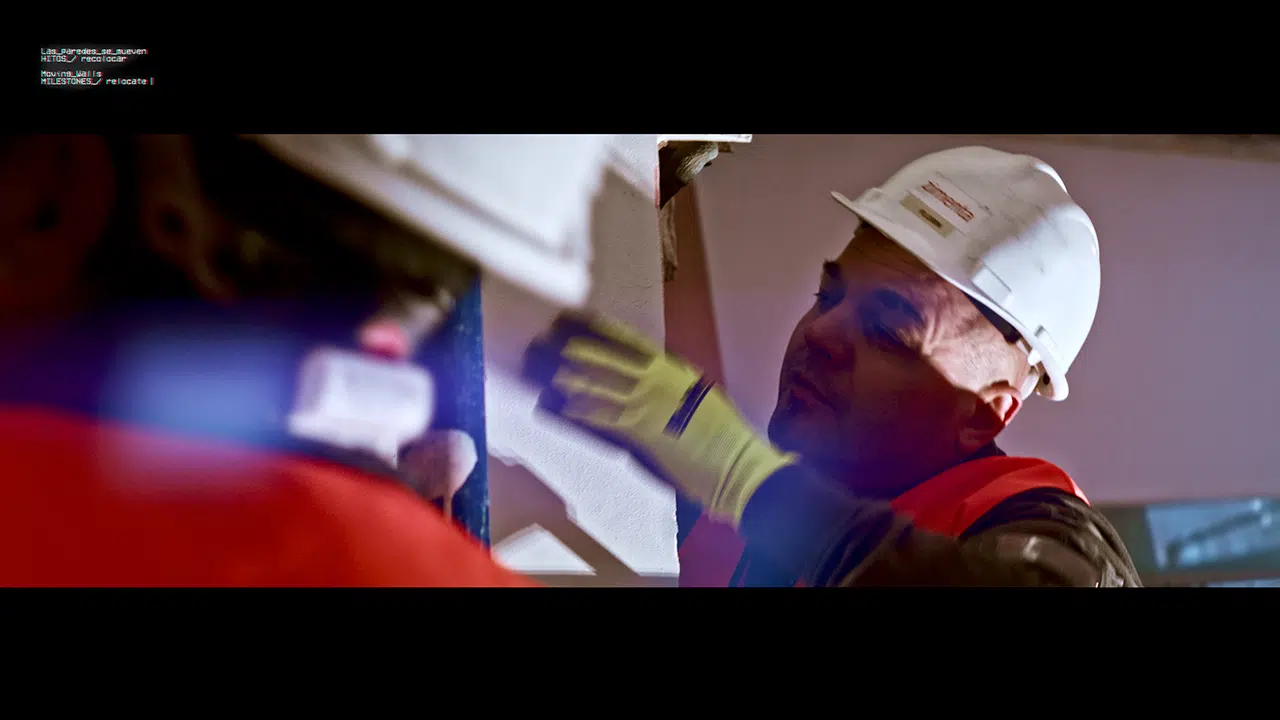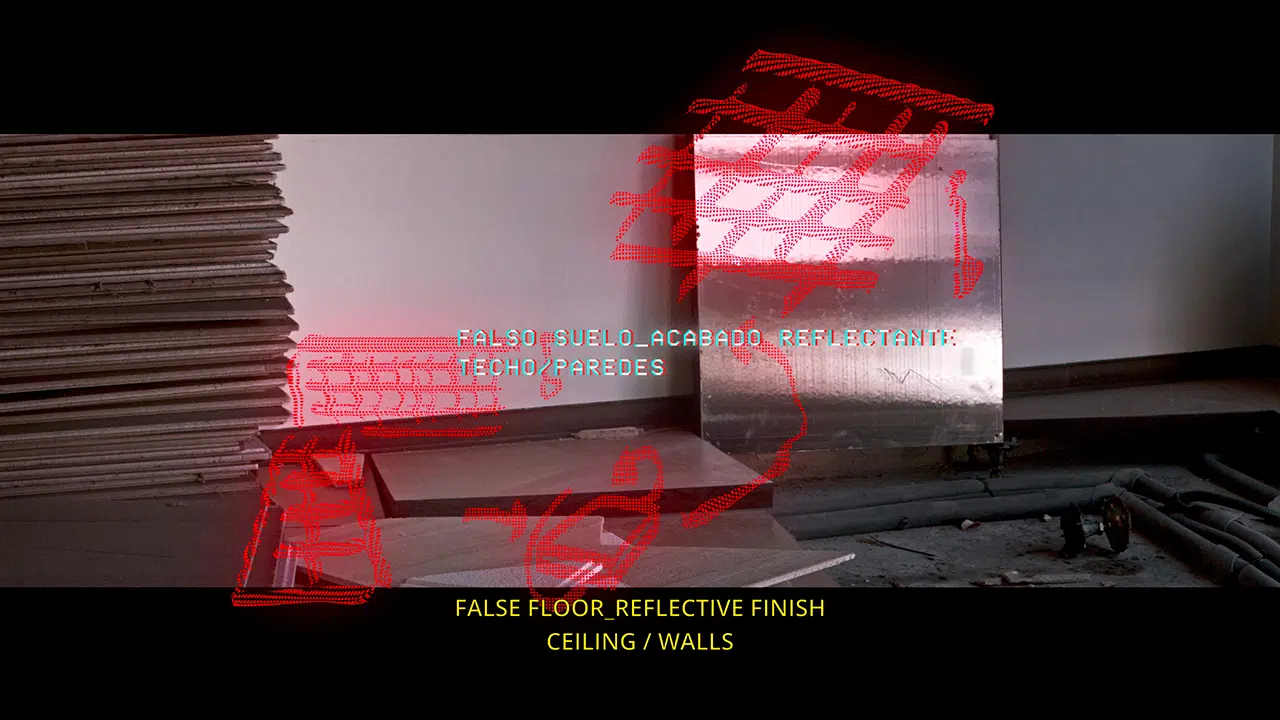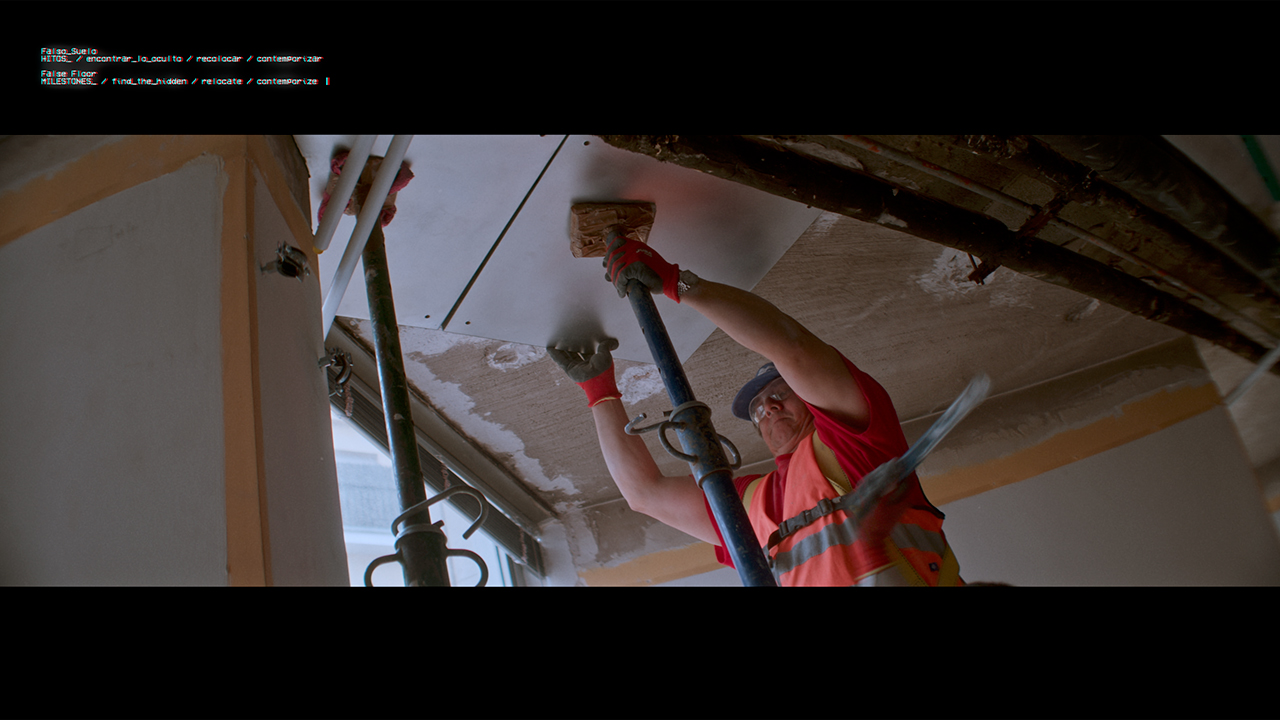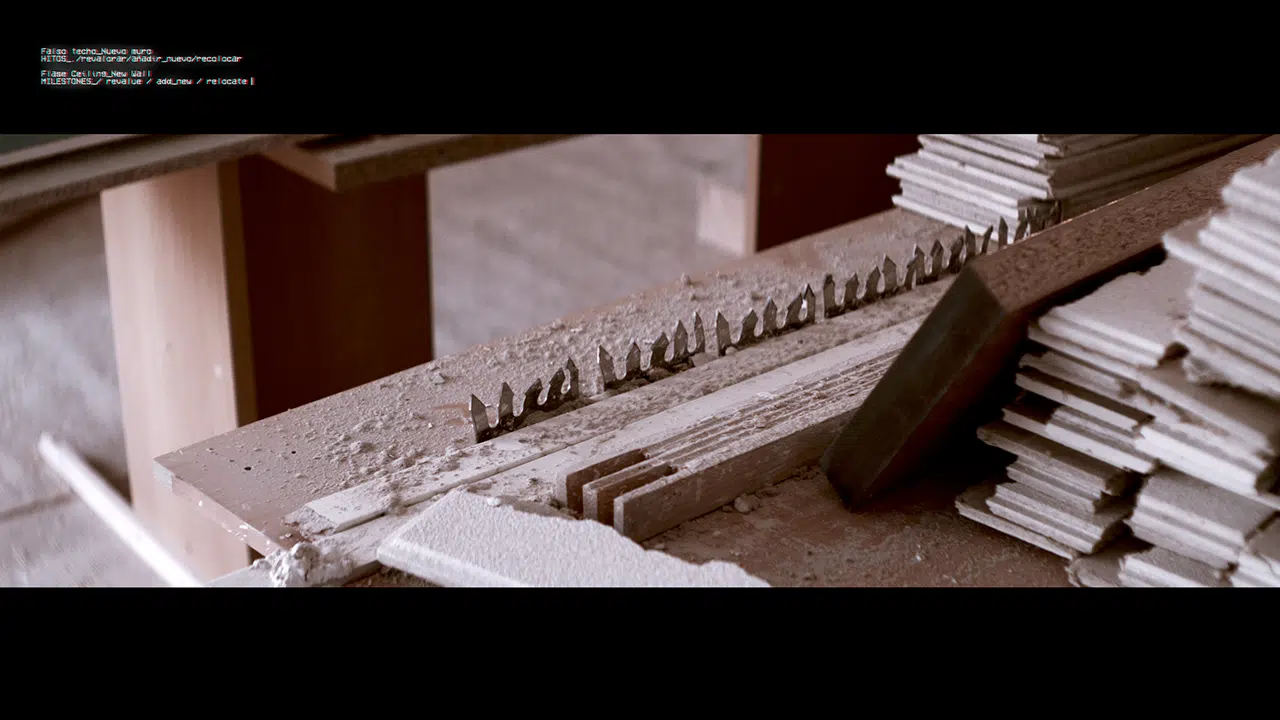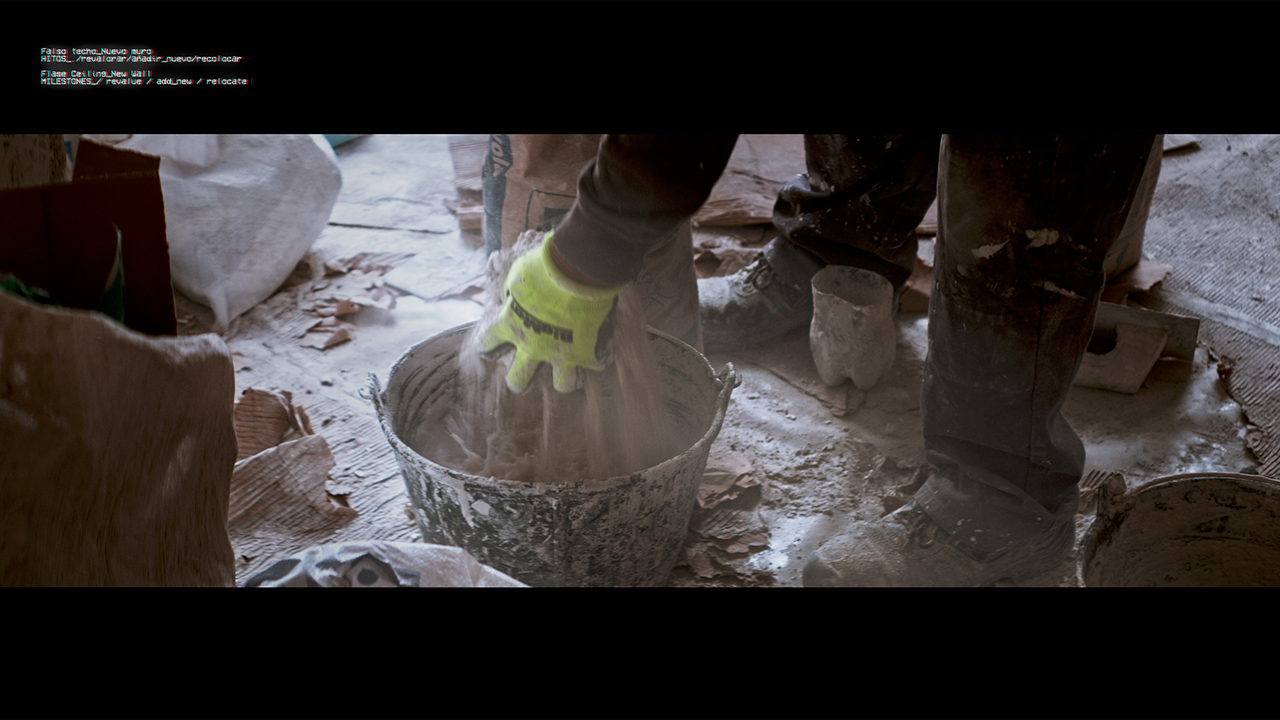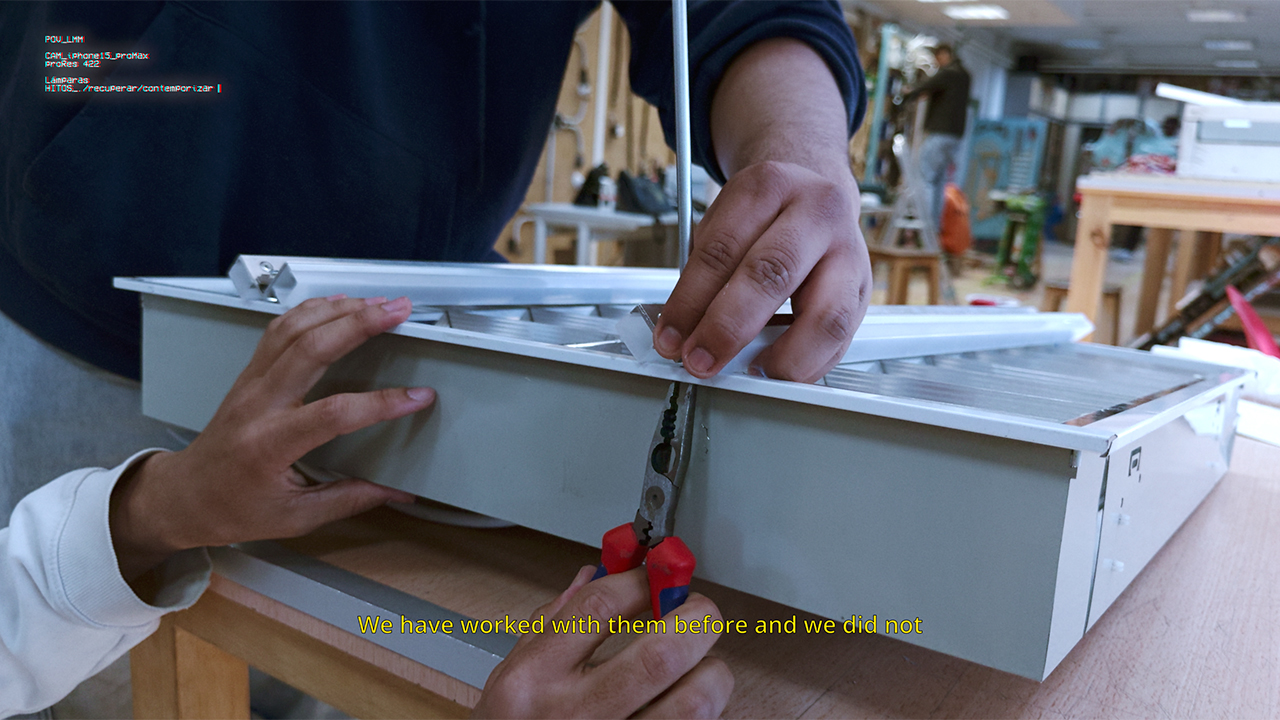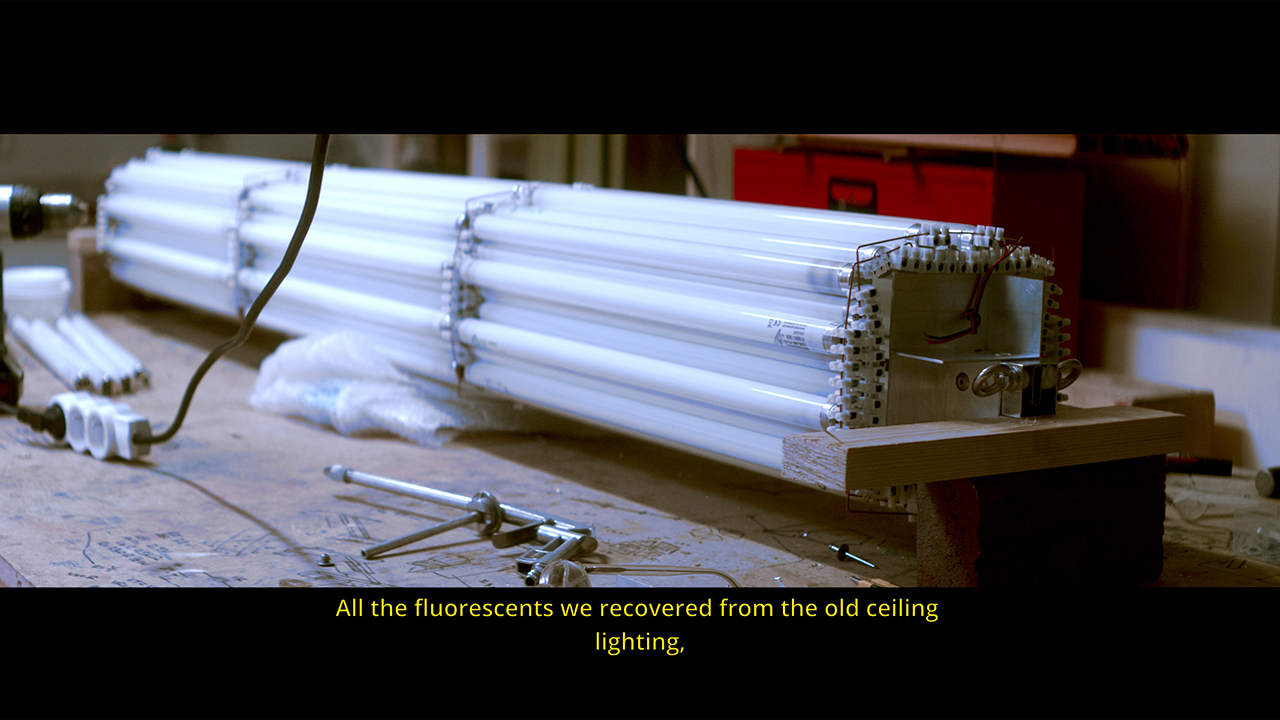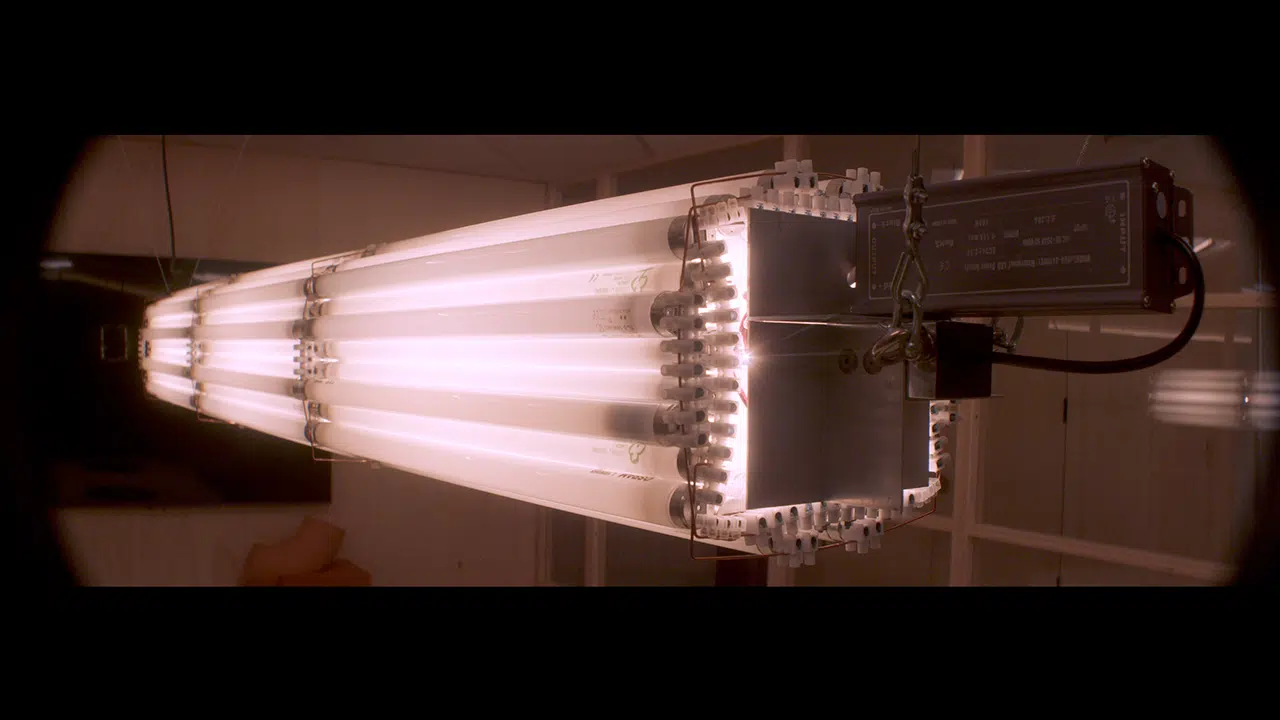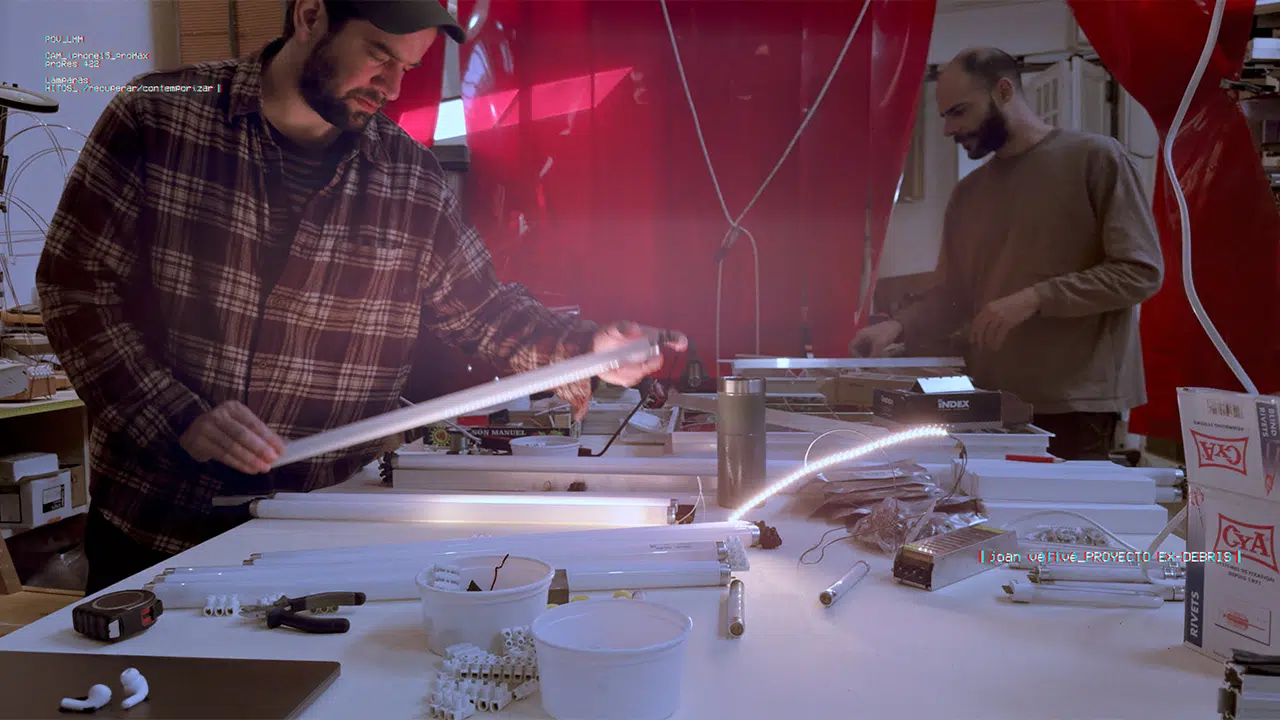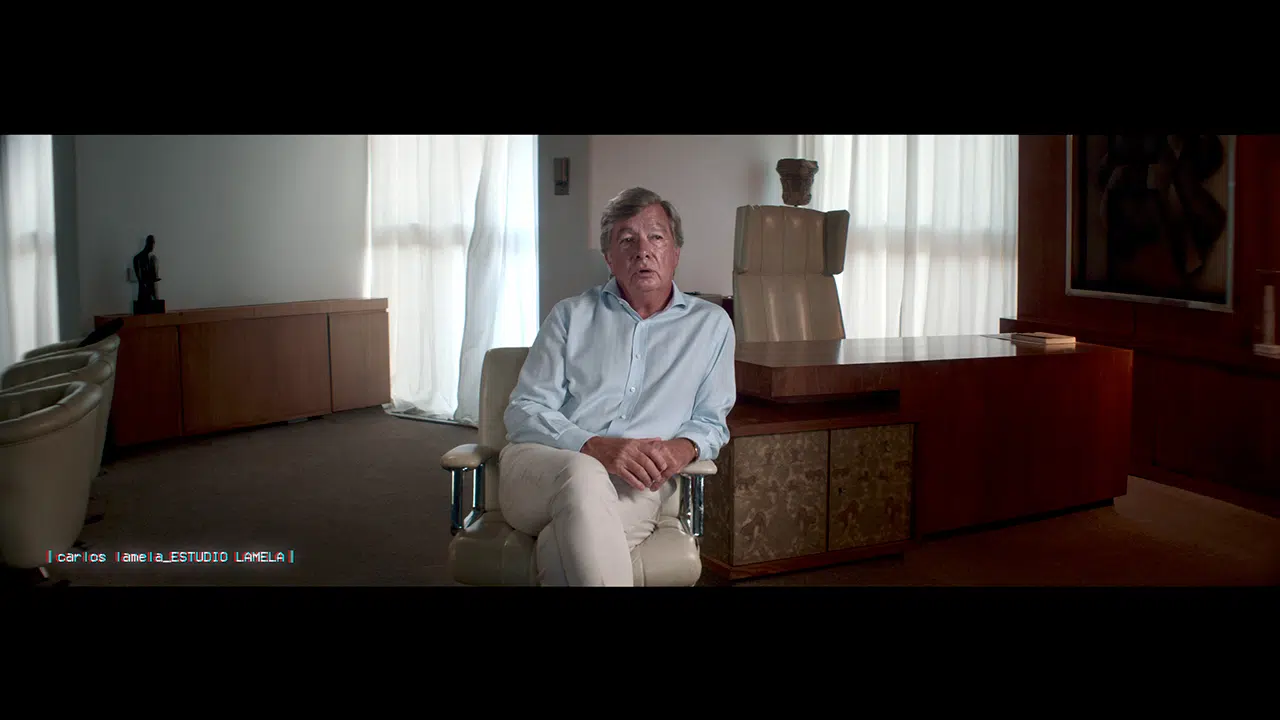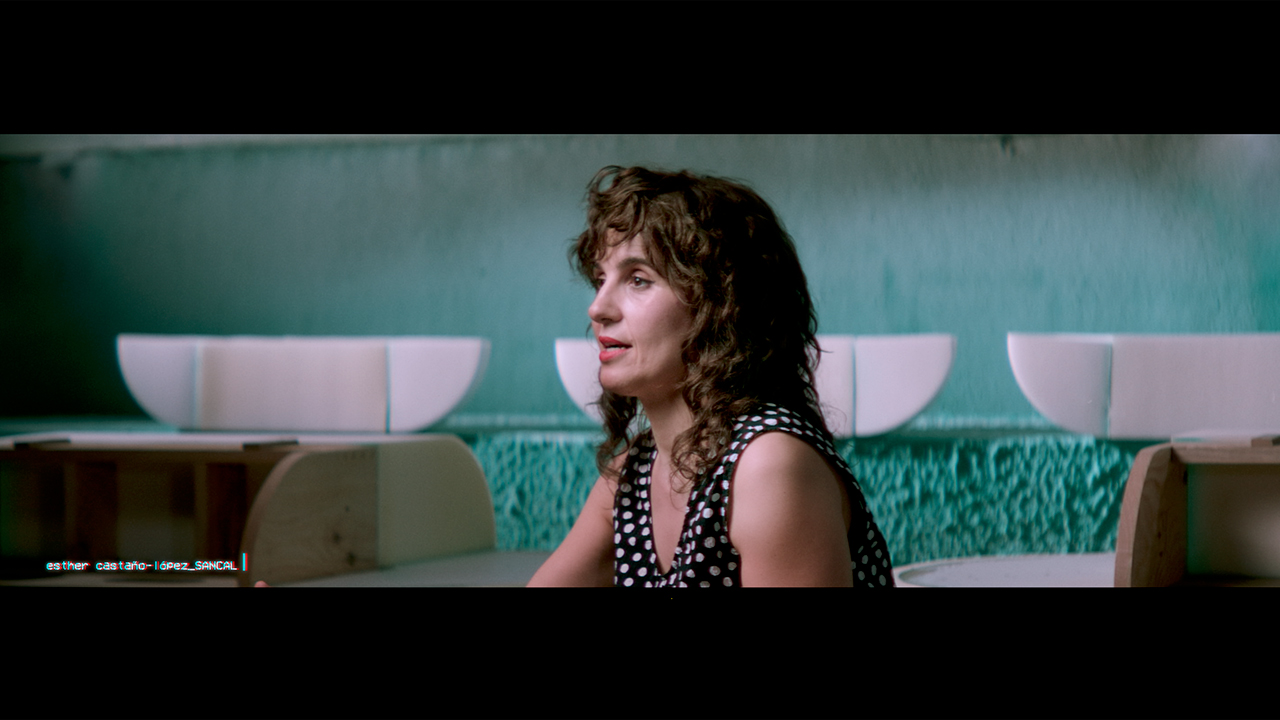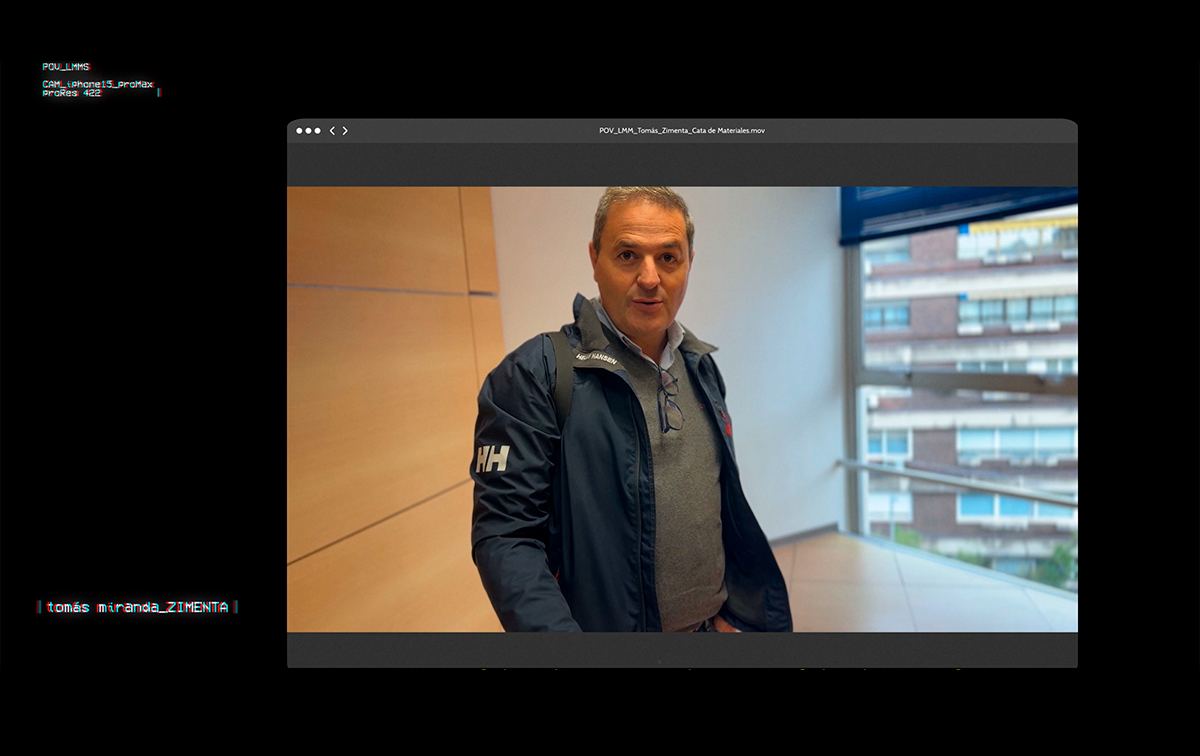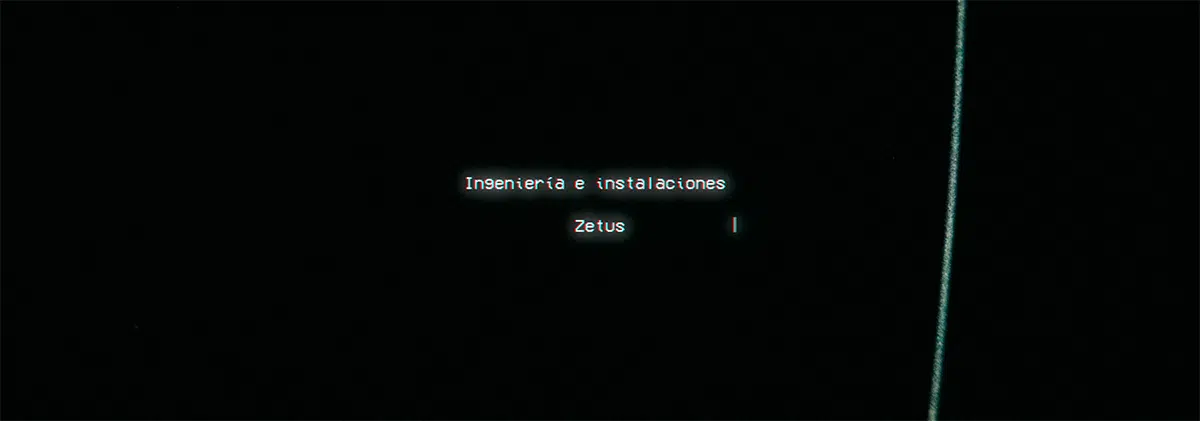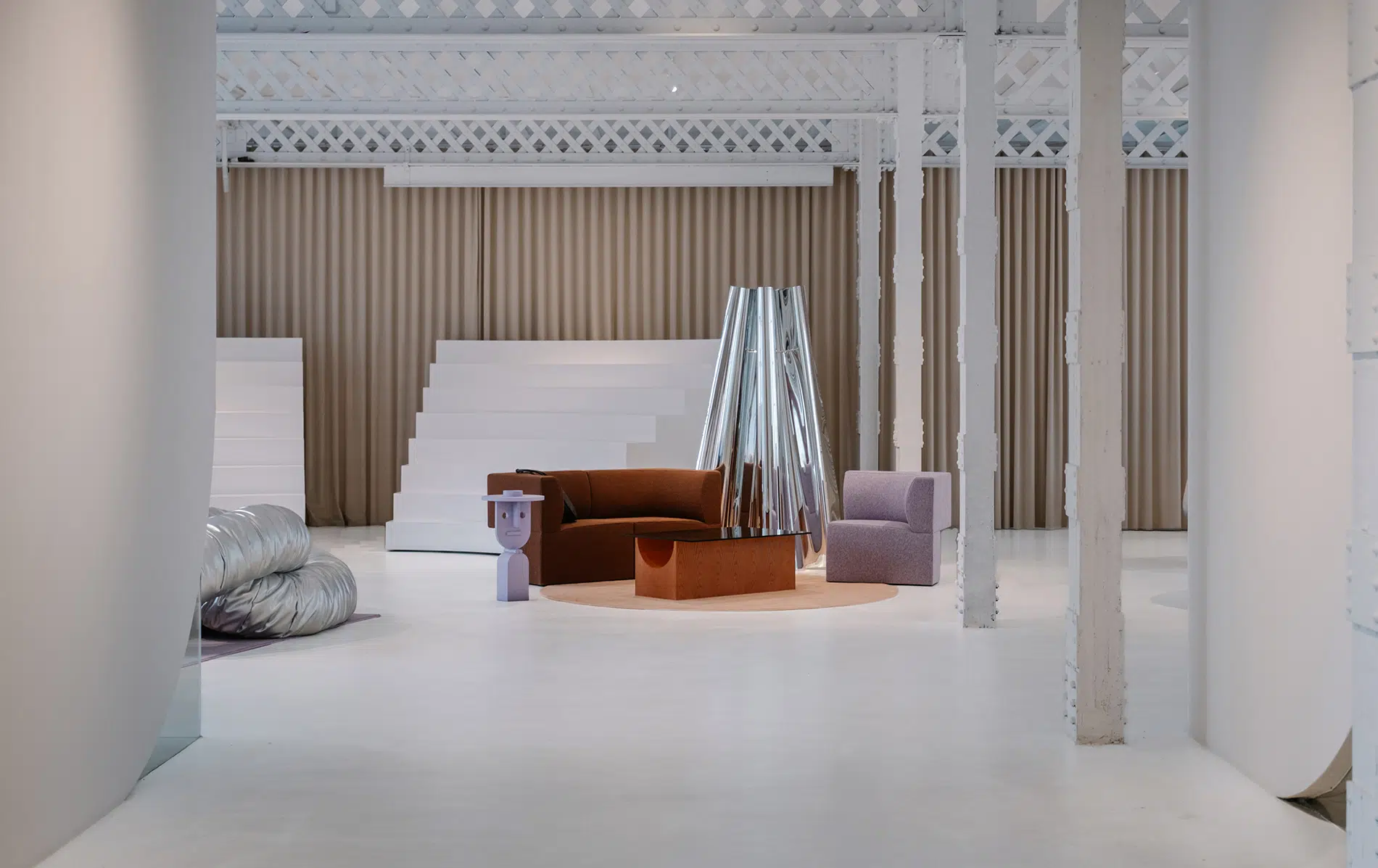A documentary about the transformation of CoLab.
Located on the fourth floor of the unique O’Donnell 34 building designed by Antonio Lamela, CoLab has not just become a showroom or an office. What was once a notary office in the late ’90s is now reclaiming its architectural legacy while projecting its future with a new identity. Over the past few months, it has also served as a workshop and a laboratory. This metamorphosis process is the central thread of the documentary The Maximisation of Circumstance.
Lucas Muñoz Muñoz has reinterpreted the space with an experimental perspective, salvaging materials, revealing the traces of the building, and turning them into design elements. This vision is brought to life through the audiovisual work of Manu Toro, featuring a visual narrative that not only documents the process but also enhances its vibrant, ever-evolving character.
A documentary about conscious improvisation
The idea for this footage emerged after the first meeting with Lucas Muñoz and his studio. What initially seemed like a simple making-of has evolved into a reflection on design and its ability to adapt to circumstances.
While the brief presented a clear challenge: to transform a pre-existing space by reutilizing original materials, respecting its essence, and breathing new life into it; there was no predefined plan, no renders, or strict guidelines. Everything was built in real time, with decisions made on the go, depending on the context and the discoveries that arose along the way. As Esther explains in the documentary: “It was about being honest with the space; not everything needs to be demolished and rebuilt. A testament to the passage of time, reminding us that not everything needs to be new”.
Watch its trailer!

Two legacies, one material inheritance.
The documentary also explores the parallelism between different approaches to creative legacy: Carlos Lamela, who continues his father Antonio Lamela’s work; Esther and Elena Castaño López, who represent the second generation of Sancal. And also, Lucas Muñoz, who has conceived this renovation as a material, physical, and spatial exercise. As he states: “Heritage is transformed, protected, and is material because it evolves and becomes something else.” This heritage will also be future, stemming from the conscious decision to extend the lifespan of materials and waste that are currently non-recyclable.
Thus, the transformation of CoLab has not merely been a physical restoration but an act of reinterpretation of the past to project it towards the future. As Esther reflects: “Maintaining a legacy is a great challenge, but continuing to create from it is, if anything, much more complex.”
To capture the essence of this process, Sancal entrusted Manu Toro, a digital creator with a reflective and poetic perspective. His initial approach stemmed from the idea of a prism with multiple facets, hence the provisional title of the documentary: 6 Walls. However, as filming progressed, the focus evolved, reflecting the nature of this vibrant project. “A visual piece that accompanies the space” and the incidental sounds resonating there became the soundtrack that Manu orchestrated to complement the images.
The audiovisual, like the project it documents, does not follow a rigid script. Its structure is flexible, open to interpretation and the nuances that have arisen during the process itself: a conscious and voluntary improvisation that has defined the work of these past months.
A human project.
Beyond being an architectural or interior design project, CoLab is a story of committed and responsible individuals. People who have contributed with their knowledge, talent, and vision to shape a space that is alive.
On one hand, Lucas Muñoz, who self-defines as a “non-designer”, but rather a historian, researcher, and conceptualiser. Since the beginning of the project, he has immersed himself in studying the iconic building of Lamela, seeking to understand its essence before intervening. Joan Vellvé, an essential part of Lucas’s team, has also been a key figure in the entire project.
On the other hand, Carlos Lamela, son of architect Antonio Lamela. His connection to the project goes beyond architecture, as he has generously shared his memories and experiences with us while following in his father’s professional footsteps.
We also highlight the work of Manu Toro, who, with his sensitivity behind the camera, has captured the essence of the project. His perspective is not only technical but also conveys emotion behind each image.
Tomás Miranda from Zimenta has contributed not only with a team of operatives and professionals whom we can call artisans, recognising the importance of their trades, but his alternative perspective on what a builder can and should contribute to a project has been crucial.
Finally, Esther and Elena Castaño López have demonstrated their belief in talent, showing that it reaches its maximum expression when exercised with the radical generosity of those who give complete freedom to individuals to create without constraints, fully trusting their vision and capability.
CoLab is not just a renovation of a space into a showroom; it is a manifestation of what occurs when design is understood as a collective process. A reminder that architecture, design, and creativity are not merely disciplines and techniques but an expression of life itself.
Credits:


